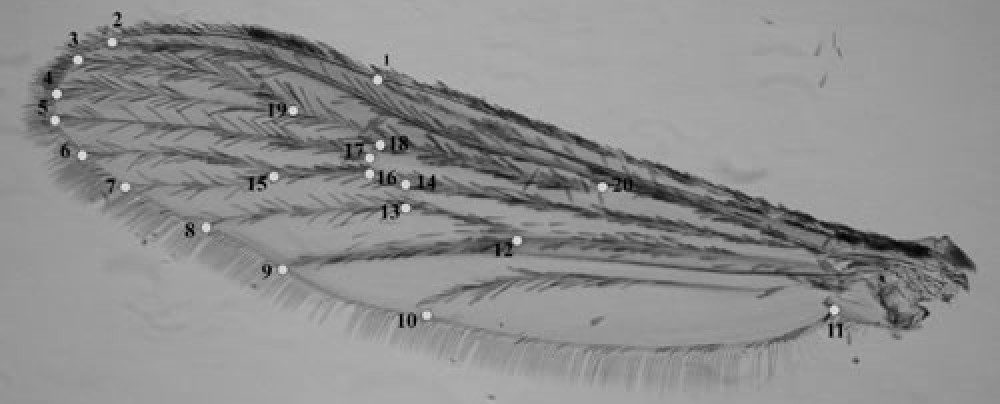Sangvorn Kitthawee1 and Jean-Pierre Dujardin2
1 Department of Biology, Faculty of Science, Mahidol
University, Rama VI Rd., Bangkok 10400, Thailand
2 UMR17 IRD-CIRAD INTERTRYP TA A 17/G Campus
International de Baillarguet, 34398 Montpellier Cedex 5,
France
Zoomorphology
DOI 10.1007/s00435-016-0307-x
Abstract
It has been proven that Diachasmimorpha longicaudata consists of three sibling species (A, B, and BB) exhibiting strong shape differences as based on their
wing venation geometry. We used these differences to classify specimens collected from different parts of Thailand.
Thus, 414 adult D. longicaudata (206 males and 208 females) were collected from 10 provinces in Thailand, mounted under transparent tape in the field and submitted to individual morphometric identification. To perform such identification, the shape of the right wing of each individual was compared to the average shape of wings from old laboratory colonies corresponding to each species and assigned to the closest one. Since this process made the identification depending on the choice of the reference
groups, we performed several tests modifying the reference groups. The modifications applied to the reference groups were the mounting technique, the sex, and the number of generations spent in the laboratory. Although liable to modify the size, and to some extent the shape, of the wings used as a reference, these various effects could not impair the classification. Thus, for species recognition within the D. longicaudata complex, the individual morphometric identification appears as a reliable technique, not or poorly influenced by the mounting technique, by the sex or by our laboratory conditions. According to this classification, and as previously observed in Thailand, species A was the most abundant and widely distributed one (eight provinces),
followed by the B species found in six provinces. The less abundant BB species was more frequent in the southern part of the country.

